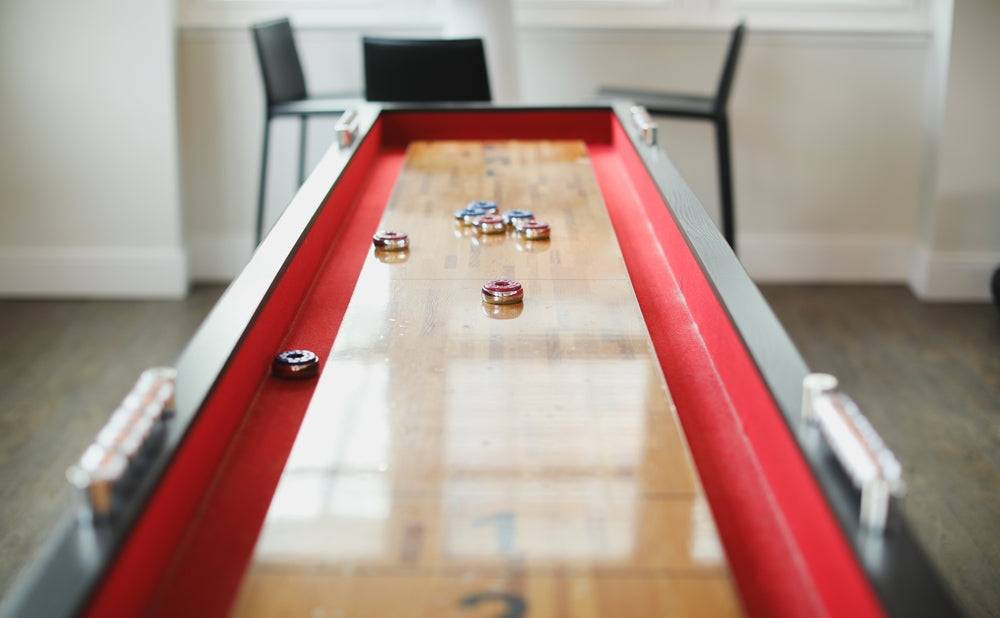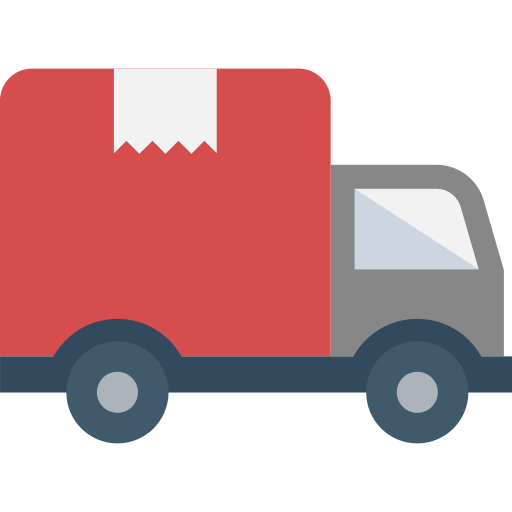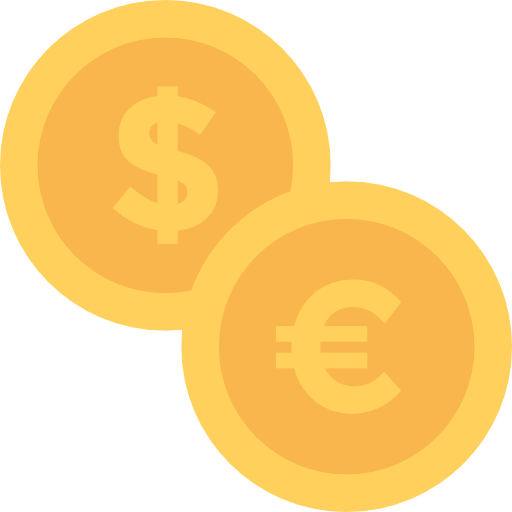A Comprehensive Beginner's Guide to the Rules, Techniques, and Strategies of this Fun and Challenging Game
Have you ever wanted to learn how to play a shuffleboard table?
Have you been looking for a comprehensive guide that can teach you the basics, and provide tips and tricks on improving your game?
Look no further.
In this article, we cover everything from the rules of the game to strategies for success when playing a Hudson Shuffleboard.
Shuffleboard is an incredibly fun game with a long history behind it dating back hundreds of years.
It can be played both indoors or outdoors and requires minimal equipment to get started.
The aim of the game is simple: using cues (or sticks) players must slide weighted discs down a board in order to land them within certain marked areas at the end of the board - earning points each time they do so.
Whether you're just starting out as a beginner or are already familiar with the basic concepts but want some extra advice on how to take your skills up a notch…
This article will help equip you with all the knowledge necessary for successful gameplay – read on to find out more!
What Is Shuffleboard?
Shuffleboard is one of the oldest and most beloved games in existence.
It has been a popular pastime since it was first invented hundreds of years ago, with millions of people playing shuffleboard around the world today.
So what exactly is it?
Shuffleboard, or shove-ha'penny as some call it, is a game where players use their hands or cues to push weighted pucks down a longboard like a 12 foot shuffleboard table towards a scoring area at the end.
To play shuffleboard, you need two teams with up to four players each.
Players take turns sliding their pucks across the board from one side to another, trying to get them closer to the center than their opponents’ pucks. The team that scores more points wins!
The equipment for playing shuffleboard includes boards of different lengths and widths depending on how many players are competing; weights such as discs or coins; and cues like those used for billiards.
Knowing which weight works best for your particular game can be tricky so practice makes perfect when starting out!
As well as familiarizing yourself with the rules of the game, understanding what type of equipment works best will help ensure success while you play shuffleboard.
Patience, dedication, and practice all come into play when mastering this classic sport that has stood the test of time.
The Shuffleboard Equipment
Shuffleboard is a great way to get people together and enjoy some friendly competition!
But what exactly do you need in order to play the game?
Knowing the basics of shuffleboard equipment will help ensure a successful match.
When it comes to playing the game, there are certain pieces of equipment necessary for a proper game of shuffleboard.
The items needed include two separate boards – one with eight numbered lanes and another with four circles at each end - as well as 16 Pucks or Weights, which come in different sizes and weights depending on what type of board you have.
To score points, players slide their pucks down the lane and try to land them inside the circle at the other end; whoever gets closest wins that round.
So what is the shuffleboard game all about? How do you play shuffleboard and how do you score in shuffleboard?
The rules may differ slightly based on where you’re playing, but generally speaking, when playing a standard single-player version of the game, a player takes turns sliding up to four pucks down their side of the court towards the opposite line.
Points are scored by landing your puck within either circle (which scores 1 point) or on top of any others already present (which scores 2 points).
Players can also knock out opponents' pucks from scoring positions; doing so adds additional points to your overall tally.
This back-and-forth continues until all sixteen pucks have been played and then tallied up - whoever has more points wins!
With this knowledge under our belts, we're ready to move ahead with setting up our own table and learning even more tips and tricks specific to shuffling success!
Setting Up The Shuffleboard Table
Setting up the shuffleboard table like the Imperial Shuffleboard is an essential step in playing a game of shuffleboard.
Before getting into how to play, it's important to understand what shuffleboard is and how the equipment works.
Shuffleboard is a game that involves pushing weighted discs down a long tabletop using cues - similar to billiards.
The aim of the game is for players to slide their discs so they come closest or knock off their opponent's disc from the table.
In order to set up your own outdoor or indoor shuffleboard table, there are some key pieces of equipment you'll need: the board itself, four to eight pucks (sometimes called weights), a pair of wooden cues with rubber tips, and wax powder for lubrication (for outdoor boards).
Once you have all these items handy, it's time to get started!
First, make sure that your board is level on its surface before setting it up.
Then, place each puck at one end of the board and spray both sides with wax powder until they appear evenly coated.
Finally, take turns sliding your disks towards the other side while aiming them as close as possible to your opponent’s disk – this will help score points when playing later on.
TIP: When setting up the shuffleboard table be sure to check if any tools were included like rulers or measuring tapes; these can help ensure everything is perfectly aligned prior to starting your game!
How To Play Shuffleboard
It's easy to learn but can take some time for those new to it to master.
When playing shuffleboard, players use long discs called pucks which they slide down a court towards scoring zones at the opposite end.
The goal of the game is simple: get as many pucks in your team's scoring zone while preventing your opponent from doing the same.
Understanding how shuffleboard scoring works is key here - points are awarded based on where each puck lands within its respective scoring zone.
So how does someone become good at this classic game? There are tips and techniques for winning at the table.
First and foremost, practice makes perfect!
As with any sport or activity, repetition helps you build muscle memory so that when you're actually competing against an opponent you know exactly what moves to make without needing to think too much about them.
Additionally, getting familiar with basic shuffleboard rules such as foul lines and double rings will help ensure success during gameplay.
With these tips in mind, you'll be ready to have fun and show off your skills on the court!
Basic Shuffleboard Rules
Shuffleboard is one of the most beloved games across generations, and for good reason!
It's so much fun that it's hard to resist.
But what is a shuffleboard? What are the rules you need to know in order to play this captivating game?
Let’s dive into the basics of shuffleboard rules, from how to count points in shuffleboard all the way up to understanding more complex strategies.
First off, let’s discuss what makes a game of shuffleboard official: each player has four pucks, which they take turns sliding down their side of the court towards the other end of the table.
The object is to get as many pucks onto or beyond your opponent's baseline while keeping yours on top; if any go over the edge, they're eliminated from play.
To determine who wins at the end of a round, players must add up their points; scored by counting how many pucks remain closest to either baseline without going over it.
It's also important to note that players may only use two hands when pushing their pucks - no using your whole body like some kind of human-puck catapult!
Plus, “bumping” (knocking an opposing puck out) isn't allowed either; if you do bump someone else’s puck during gameplay, then both parties have lost those points and can start again with new ones.
Having a solid grasp on these basics will help ensure your enjoyment when playing shuffleboard – but there are still plenty more skills worth learning before becoming an expert!
In particular, mastering fundamentals such as proper stance and grip techniques serve as essential building blocks for boosting strategy and technique knowledge further down the line.
The Fundamentals Of Shuffleboard Strategy
Some may think that shuffleboard is a simple game, but there are many strategic elements to consider when playing.
Developing an understanding of the fundamentals of strategy can give players an edge and help them reach the next level.
So how do you go about mastering the basics?
First things first: How many pucks should be used in the shuffleboard?
It depends on the type of board — some have four pucks, while others use eight or more like the Grand Hudson Shuffleboard Table.
When playing with fewer than eight pucks, aim for high scores by pushing your own close to the head (or side) line without going over it.
If you’re playing with 8 or more pucks, focus on knocking out your opponent's instead. Know which approach works best for your board setup before making any moves!
In terms of strategies during gameplay, understand that every puck has its purpose — they don't all need to land at the end of the table.
Think ahead and plan where each one will go: Use light taps to get closer to higher-scoring areas or aggressive pushes to send opponents' discs away from their goal.
As long as you keep track of what's happening throughout the game and adjust accordingly, you'll soon develop a winning strategy!
With these basics covered, it's time to move on to advanced techniques like bank shots and caroms so you can master this fun outdoor activity!
Advanced Shuffleboard Techniques
As you move beyond the fundamentals of shuffleboard, it's time to begin exploring some more advanced techniques.
These strategies will help you take your game to the next level and give you an edge over other players.
One important technique is choosing when and how hard to throw your puck.
You can use this strategy to increase your chances of scoring or blocking an opponent’s shot.
It all depends on what kind of situation you’re in and where you are in relation to the scoring area.
You also have to consider if playing defensively or offensively would be best for that particular round.
Another key factor is understanding different angles of play.
This involves considering where the puck should go based on its position at any given moment during a turn.
By having a good grasp of angles, you'll be able to make smarter shots each time around, which increases your odds of success significantly.
To maximize these skills, practice is crucial.
Repetition helps hone them so they become second nature as you play against opponents who may not understand their importance yet.
With enough experience under your belt, these tips will carry you far into becoming a skilled shuffler – no matter what style or approach suits your fancy!
Now let's look at how we score points in shuffleboard...
Scoring In Shuffleboard
Scoring in shuffleboard is a complex yet rewarding game.
As the discs glide across the board, there's an almost magical feeling as you strive to achieve the highest score possible.
With a few simple techniques, you can quickly become proficient at scoring your way to victory.
The key to success with shuffleboard lies in understanding how points are scored and what strategies will give you maximum benefit.
Each disc that reaches its goal scores one point, but if it overlaps or touches another disc of either color, those two discs each receive half a point instead.
Careful placement of your pieces can ensure more accurate throws and help improve your chances of achieving higher scores for each move.
Though luck plays a factor in some games, strategy is also essential when playing shuffleboard - especially for experienced players who want to maximize their points.
Knowing which shots are riskier than others and having an eye for snookering opponents' pieces can make all the difference between winning and losing.
As such practice is necessary to hone these strategic skills and gain confidence in making these calculated moves.
Tips To Improve Your Shuffleboard Skills
Who would have thought that a game as simple as shuffleboard could be so difficult to master? Sure, it looks easy enough.
But the truth is, becoming an expert at shuffleboard takes practice and dedication!
So how can you sharpen your skills? Here are some tips to improve your shuffleboard prowess on an Imperial Bedford 12ft Shuffleboard Table in Silver Mist.
First off, get familiar with the rules of the game and stick to them.
Learning about all the different aspects of the game will help you understand when and why certain moves should be made, which can give you a huge advantage over other players.
If possible, find someone who’s already experienced in playing shuffleboard and ask for advice on strategies or techniques they use while playing.
This can provide invaluable insight into what works best in any given situation.
Also, don't forget to warm up before each session!
Making sure your body is loose and relaxed helps keep your mind sharp too - allowing you to think more clearly while making strategic decisions during gameplay.
Additionally, make sure you focus on one move at a time; this way, you won’t become overwhelmed by trying to do too much at once.
With these helpful tips in mind, there's nothing standing between you and success on the boardwalk!
With proper preparation and technique comes improved skill level - but even then mistakes can still happen from time to time.
The next section covers common blunders made in the sport of shuffleboard...
Common Mistakes In Shuffleboard
It may seem counterintuitive, but making mistakes is an essential part of the learning process when it comes to shuffleboard.
Some theorize that people are more likely to learn and retain information after they've experienced failure in a particular task.
So, if you want to get better at shuffleboard, don't be afraid of making mistakes!
One common mistake involves misjudging the weight needed for each shot.
If your puck doesn't go where you intended it to go, take a step back and consider whether you put enough force behind your shot or not.
It's important to remember that each board will have different weights associated with it, so what works on one board might not work on another.
Another frequent mistake is forgetting to angle your shots properly.
Beginners often forget that there needs to be some spin on their puck in order for them to reach their desired destination.
To avoid this issue, try practicing your shots from various angles before playing against other players.
This will help increase your accuracy and consistency while playing shuffleboard.
Every player makes mistakes – even those who have been playing for years!
The key is to practice consistently and observe how others play the game; both approaches can help improve your skills over time and give you greater chances of winning matches.
Final Thoughts On Shuffleboard
The end of a shuffleboard match brings with it an opportunity to reflect on what went right and wrong throughout the game.
Take this chance to think about any missed shots or chances where you could've improved your strategy.
This kind of self-evaluation will allow you to adjust your approach in future games and become a better player overall.
Additionally, don’t be afraid to ask experienced players for advice – they may offer valuable insight into techniques or strategies you haven't considered yet!
No matter how much experience you already have with the game, there's always room for improvement.
The key is committing yourself to learn new techniques and perfecting existing ones – whether through practice or getting feedback from others.
With dedication, even newcomers can quickly become skilled enough to challenge more seasoned opponents!
So get ready: it won't be long before you'll be dominating every round of shuffleboard!
Frequently Asked Questions
What Is The Difference Between Indoor And Outdoor Shuffleboards?
Shuffleboard is a game that can be enjoyed both indoors and outdoors.
There are some key distinctions to consider when deciding which type of shuffleboard would best suit your needs.
Indoor shuffleboards tend to be much longer than outdoor boards, usually measuring up to 22 feet long.
This size makes it easier for players to move down the court as they shoot their discs or pucks towards their scoring zone.
They’re also made of different materials than outdoor boards.
Indoor courts are typically constructed from hardwood or asphalt, while outdoor surfaces consist mostly of concrete or clay.
Outdoor shuffleboards have shorter playing fields and require more strength and skill to accurately hit the target area.
The surface material used in an outdoor board is usually treated wood covered with wax or oil - this helps protect against harsh weather conditions like rain or snow!
Also, depending on where you play, there may be regulations regarding how high each player can stand during games.
Making it important to familiarize yourself with local rules before beginning a match outside.
So whether you're looking for a leisurely backyard activity or want to challenge your friends with intense competition, understanding the differences between indoor and outdoor shuffleboard will help ensure everyone has an enjoyable experience!
Do you want to make your shuffleboard time more fun and lively? Then turn on the music with a Rock-Ola Bubbler Peacock CD Jukebox!
Is There A Maximum Number Of Players Allowed In A Shuffleboard Game?
To some, shuffleboard is a game of strategy and skill; to others, it’s as much about luck.
No matter the approach you take, there are certain rules that apply when playing this beloved game.
One such rule is determining how many players can be in a single game – but what exactly is the maximum number?
The answer lies in the type of shuffleboard being played.
Indoor games usually have less than four players at once while outdoor courts can accommodate up to six or more people.
This makes sense because most indoor tables will not fit more than 4 people comfortably around it whereas outdoors provides plenty of space for everyone involved.
Symbolically speaking, it's like having two different sizes of umbrellas on a sunny day – one only covers so much area before becoming too crowded!
So if you're looking to maximize your fun with friends (or even strangers!) then an outdoor court may just be the perfect place.
Whether you want a low-key competition between 2 or an all-out war among 6 opponents, everyone has enough room to enjoy themselves without feeling cramped or overwhelmed by too many bodies in close proximity.
It's time to get moving - let's hit the court!
Does The Length Of The Shuffleboard Table Affect The Game Rules?
Ah, the age-old question: does the length of a shuffleboard table really affect how you play?
Well, we here at Beginner's Guide to Shuffleboard have a few tips and tricks that might help you out.
Because let's face it, playing on a longer board can be tricky!
Here are our top four reasons why size matters in this game:
If your team is used to playing on shorter boards, then they'll be in for some serious adjustments if they end up trying their hand at one that's much longer.
It takes an experienced eye and steady hands to succeed on such tables!
With larger surfaces come different strategies for success.
You may need to rethink your approach completely when facing off against opponents on bigger boards because smaller ones simply don't offer the same challenges or opportunities.
On bigger boards, each shot must be carefully considered before it is made.
Otherwise, you could find yourself with too little power behind your puck or shooting into oblivion instead of towards the scoring area!
Of course, there will always be slight differences between what's allowed and not allowed depending on how big your table is.
That’s why you need to make sure you know which variant you're playing so everyone knows what kind of gameplay is expected from them beforehand!
So there you go!
While size doesn't necessarily determine who wins or loses in this classic game, it pays (literally!) to take note of where you’re competing and adjust accordingly!
So keep these tips handy next time someone suggests a friendly round of shuffleboard – now get ready for maximum fun!
Are There Any Official Tournaments For Competitive Shuffleboard?
Shuffleboard, a game that has been around for centuries is becoming increasingly popular in recent times.
From casual family gatherings to competitive tournaments, the game of shuffleboard offers something for everyone.
But are there any official tournaments dedicated solely to shuffleboard?
The answer is yes!
Competitive shuffleboard tournaments have become more and more frequent over the years as people look for fun ways to engage with friends and family while also providing an entertaining challenge.
These tournaments often include different divisions based on skill level and age group.
So regardless of your experience or how much time you've spent playing shuffleboard, it's possible to find a tournament that suits your interests.
In addition to offering traditional shuffleboard competitions, many organizations are now putting on special events such as team-based contests or head-to-head matches between experienced players.
Whether you're looking for some friendly competition or want to see who can rack up the most points in one round, these types of tournaments provide plenty of opportunities for both newcomers and seasoned pros alike.
Is There A Certain Age Requirement For Participating In Shuffleboard?
Shuffleboard is a game that can be played by people of all ages, but one question remains: Is there a certain age requirement for participating in shuffleboard?
The answer to this depends on the type of tournament you are considering playing.
First and foremost, it should be noted that most recreational tournaments have no specific age requirements.
Therefore, if you are interested in casually competing with friends or family members, anyone who meets the basic physical requirements would qualify.
Here is what you need to know when deciding whether someone of any given age is eligible to participate in an official tournament:
- Youths aged 15-17 may compete as long as they have parental consent
- Adults 18 years old or over may play without parental approval
- Individuals between 12 and 14 must have a parent/guardian approval form signed before participation
- Players 16 years and older may sign their own waiver forms without guardian approval
- Professional players must meet all legal criteria and follow set regulations depending on local laws within each country
No matter which category fits your particular situation, make sure to read through all rules carefully prior to registering for any formal competition!
With these guidelines in mind, you can now confidently decide how best to proceed with your ambitions of becoming a competitive shuffleboard player.
Conclusion
Shuffleboard is an enjoyable and exciting game for players of all ages.
With so many variations available, it can be hard to decide which type of shuffleboard is the best fit for you.
Whether you're looking for a fun indoor or outdoor activity, enjoying some friendly competition with friends, or getting ready to compete in tournaments, there's something out there that will suit your needs.
As you explore this fascinating sport, consider trying different rulesets, experimenting with table lengths and sizes, and learning new strategies as you go.
No matter what level of experience you have—beginner or advanced—shuffleboard has something to offer everyone who plays!
So check out our Gaming Blaze catalog and become a pro at shuffleboard!





